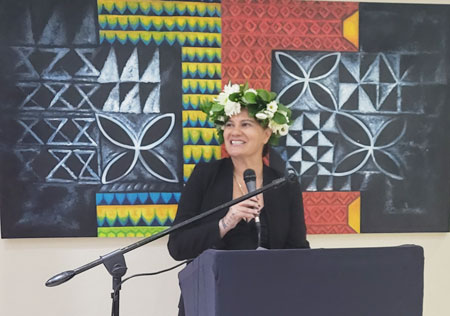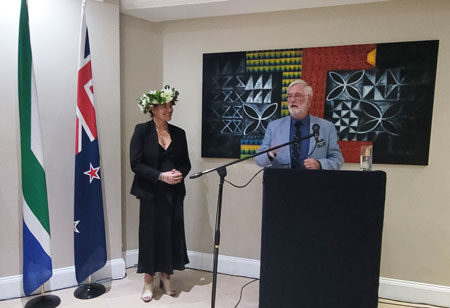The rising of the Matariki stars
 Dr Emma Dunlop-Bennett, High Commissioner of New Zealand
Dr Emma Dunlop-Bennett, High Commissioner of New Zealand
21 June 2022
A beautiful, clear Winter Solstice evening in Pretoria provided the perfect setting to celebrate the rising of the Matariki stars at Aotearoa New Zealand house. Dr Emma Dunlop-Bennett, High Commissioner of New Zealand to South Africa said that Matariki is a time to reflect, remember, reconnect and renew. It is a time to “come together and reflect on the year that has passed, to celebrate the present, and to plan for the future.”
Matariki is a cluster of 9 stars – also known as Pleiades. Māori believe that the appearance of Matariki in the morning sky in mid-winter marks the Māori New Year, said Dunlop-Bennett. “For our tūpuna, our Māori ancestors, astronomy was interwoven into all facets of life. Meticulous observations of the movements of the stars and planets, the changing position of the sun, and the phases of the moon were recorded and handed down from generation to generation. The knowledge was connected to seasonal activities such as the planting and harvesting of crops.”
 Professor David Buckley and Dr Emma Dunlop-Bennett
Professor David Buckley and Dr Emma Dunlop-Bennett
Professor David Buckley, an astronomer, and currently the Southern African Large Telescope Global Ambassador, gave insight into the scientific and mythological significance of Pleiades. It is a cluster of relatively young stars, just 100 million years old, as compared to dinosaurs that roamed the Earth 300 million years ago. A notable aspect of the cluster is the nebulosity surrounding it which is caused by blue light reflecting off a large dust cloud that the cluster is passing through.
In southern Africa, said Buckley, the first sighting of the constellation known as IsiLimela was an indication that it was the beginning of the planting season. He narrated traditional folklore about the origins of constellations involving zebras and lions and huntsmen and husbands and daughters, and it became clear that every culture on Earth look to the stars for guidance, reinforcing Dunlop-Bennett’s statement that ‘astronomy was interwoven into all facets of life’.
Guests had the opportunity to view clusters visible in the southern African night sky through telescopes that were placed outside. They were shown a cluster similar to Pleiades called the Jewel Box, Alpha Centauri, the closest star to us, and a planetary nebula which is a remnant of a dead star. Unfortunately Pleiades could not be viewed as it rises just before dawn in the southern African sky.
TDS


